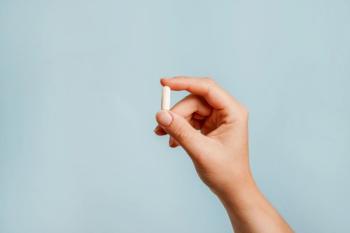
Drug approval is only the beginning; tackling codes is next
HCPCS codes and DRGs must be set up before many new drugs are reimbursed
Drug approval only the beginning; tackling codes is next
Getting a new drug into general use is trickier than it appears. Just ask Scios, which got Food & Drug Administration marketing approval for Natrecor (nesiritide) in August 2001. Fewer than one-third of the 250,000 to 500,000 congestive heart failure patients who might benefit from nesiritide are actually getting it.
Nesiritide didn't get an Ambulatory Payment Classification (APC) pass-through code under the Hospital Outpatient Prospective Payment System (HOPPS) until April 1. Without a reimbursement code, clinics and emergency departments could not get reimbursed for the new recombinant human B-type natriuretic peptide. "Smaller companies launching their first product typically miss the boat on reimbursement," explained Tom Feldman, Scios v.p. of sales and marketing.
So do some large manufacturers. For example, pharmacists and physicians who want to use Eli Lilly's new drug for sepsis, Xigris (drotrecogin alfa [activated]), face severe utilization restrictions in most institutions. Sepsis kills 215,000 annually, Lilly said, but first-quarter sales of $22 million suggest that only about 3,250 patients received the drug.
"FDA approval is only the beginning," said Mark Erwin, reimbursement manager for IDEC Pharmaceuticals. "The second hurdle to open utilization is being able to get reimbursement."
IDEC's Zevalin (ibritumomab tiuxetan) was not used to treat as many as 17,000 non-Hodgkin's lymphoma patients in the first four months after FDA approval, Erwin said. The radiotherapeutic agent was approved this past February. A typical course of treatment costs $20,000. Medicare reimbursement for outpatient use under HOPPS won't begin until October.
Institutions are dragging their feet because of cost, said consultant Daniel Albrant, president of Pharmacy Dynamics. Providers are reluctant to adopt expensive new products until reimbursement is available, he explained. The problem is that reimbursement codes are all bestowed by the Center for Medicare & Medicaid Services (CMS). The CMS Healthcare Common Procedure Coding System (HCPCS, pronounced hick-picks) is used to pay more than five billion claims annually.
Drugmakers can't even apply for a permanent HCPCS code until they have at least six months of sales data. Given current application deadlines and implementation schedules, providers wait between 15 and 26 months from the time of FDA marketing approval to reimbursement, noted Deborah Walter, policy director for the Pharmaceutical Research & Manufacturers of America.
Temporary HCPCS codes can be obtained for some products in five to seven months, she said. But creating temporary codes and tracking utilization across multiple codes is an administrative headache. "Everyone has to work through the same gatekeepers at CMS," explained Lorrie Kline Kaplan, executive director of the National Home Infusion Association. "Even the home infusion industry, which is 60% private pay, is driven by HCPCS codes."
That's because HIPAAthe Health Insurance Portability and Accountability Act of 1996requires all providers and payers to use a common coding system. CMS chose HCPCS, Kaplan said, because it was the closest that existed to a nationally recognized system.
HCPCS covers more than 4,000 separate categories and millions of specific services, procedures, and products. Drug products generally have codes that begin with the letter J followed by four numbers.
Outpatient products such as nesiritide can get a temporary code, because HOPPS allows for temporary pass-through payments for new technology. The higher cost of the new technology is incorporated into a permanent APC two to three years after it comes on the market.
There is a similar add-on provision for new technology on the inpatient side, explained Douglas Fish, associate professor of pharmacy and critical care clinical pharmacist at the University of Colorado Hospital. But it has never been used.
CMS has received four applications for new technology add-on payments. All four, including Zyvox (linezolid, Pharmacia) and drotrecogin alfa, were rejected in May. CMS asked for additional clinical data on drotrecogin and will make a final determination later this year.
The other alternative to getting reimbursement is to convince CMS to create a new, higher- paying diagnosis-related group (DRG) that incorporates the new product. That means getting a new ICD-9 code, also created by CMS. Once the new ICD-9 is in place, the manufacturer can collect cost and outcomes data to support a new, higher-paying DRG or boost payment on an existing DRG.
That's the route Cordis is taking for its new drug-eluting stent, CYPHER. The list price for CYPHER in Europe is about $2,300, more than traditional stents used in the United States, said spokesman Marty Schildhouse. CYPHER releases Rapamune (sirolimus, Wyeth Pharmaceuticals) to reduce new blockage at the stent site.
"It is critically important to have a unique ICD-9 code if one wants to pursue assignment to a different, higher-paying DRG than the ordinary bare metal stent DRG," Schildhouse explained. "Drug-eluting stents will be reimbursed at the same rate as bare metal stents unless they're reassigned to a higher-paying DRG."
Fred Gebhart
Fred Gebhart. Drug approval is only the beginning; tackling codes is next.
Drug Topics
2002;14:HSE1.
Newsletter
Pharmacy practice is always changing. Stay ahead of the curve with the Drug Topics newsletter and get the latest drug information, industry trends, and patient care tips.















































































































